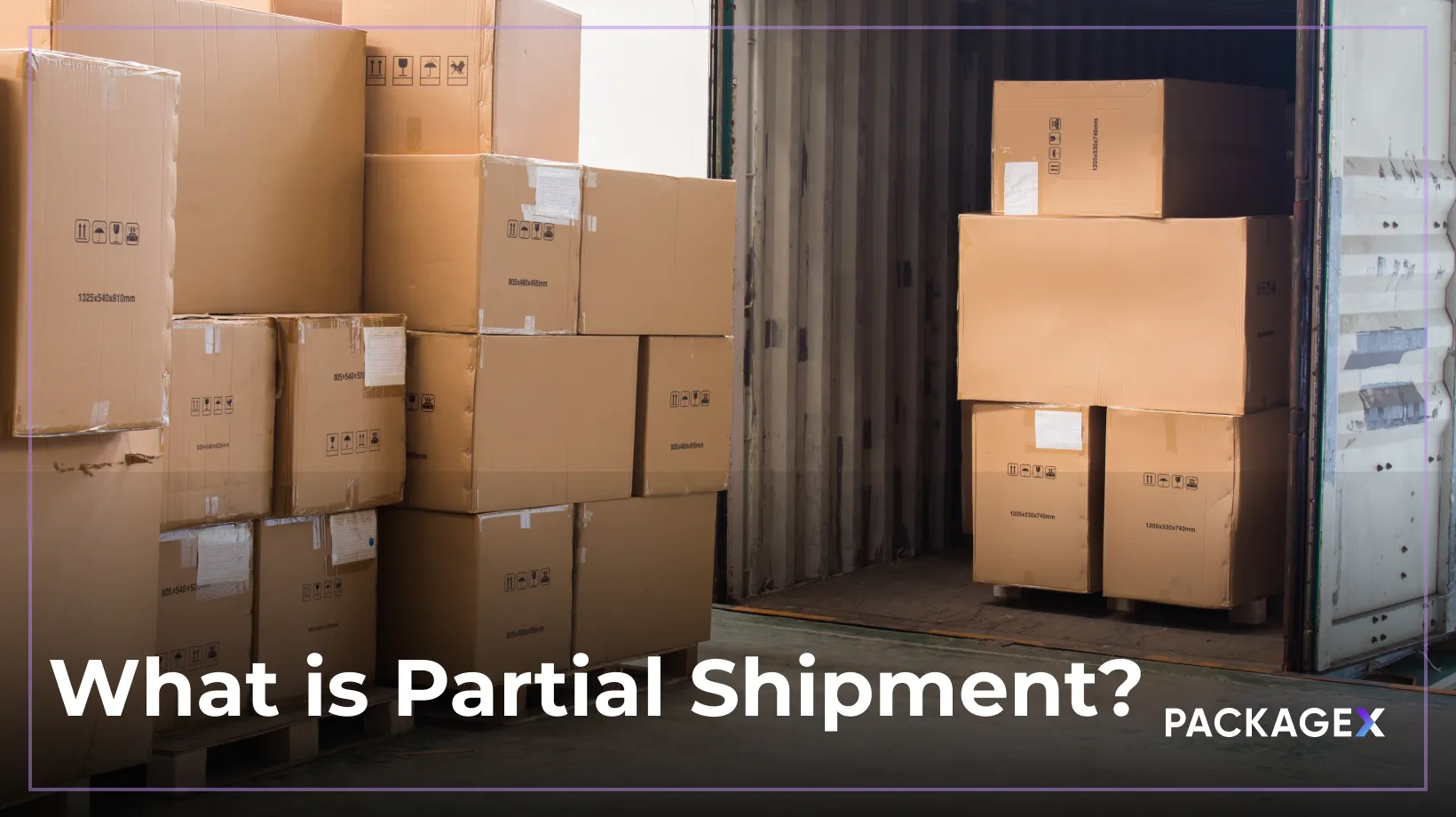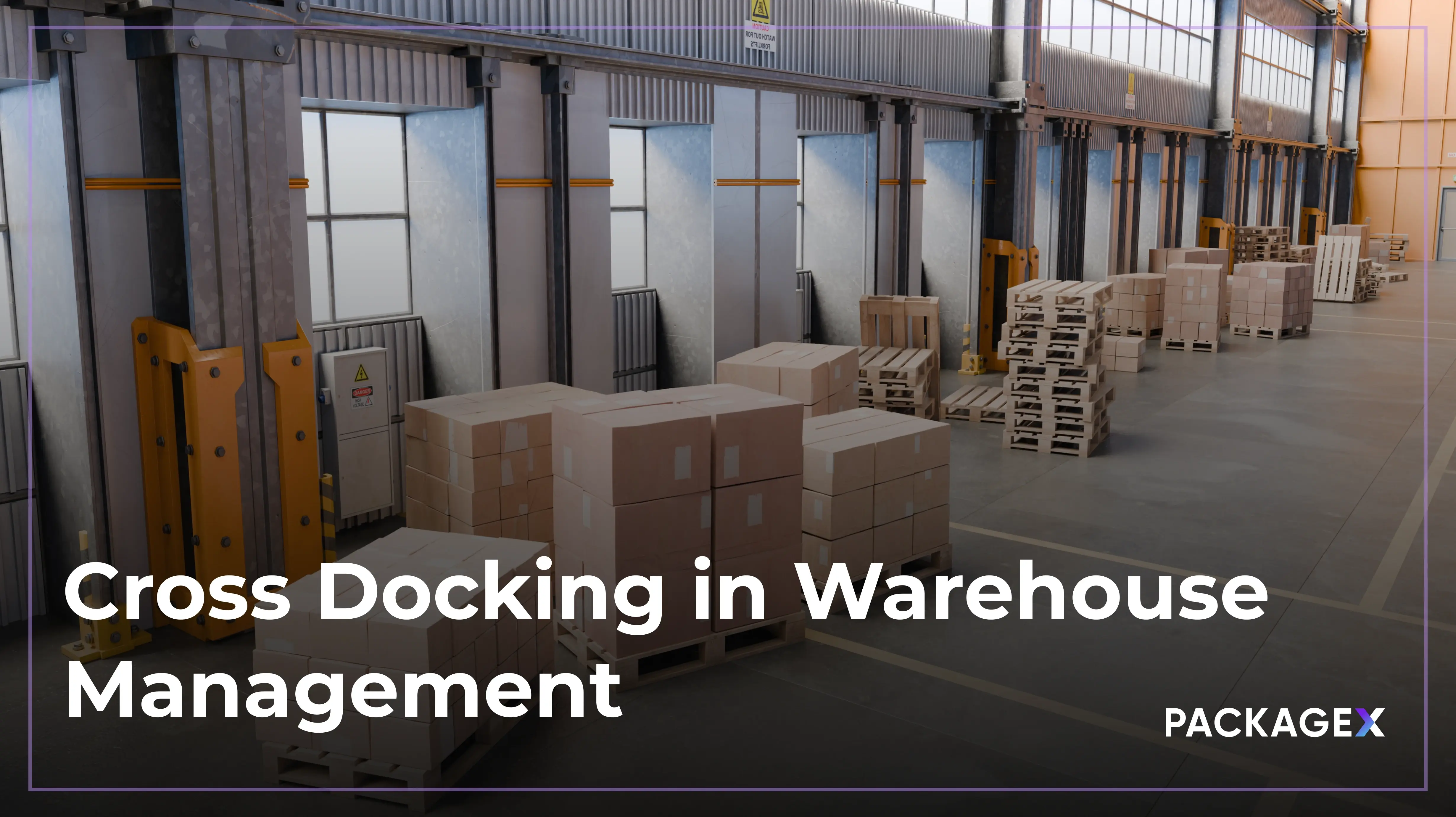In today’s fast-moving world of e-commerce and global trade, not every order can be shipped in one go. Sometimes, products are spread across warehouses, or a few items take longer to arrive from suppliers. This is where a partial shipment comes in. In simple terms, partial shipment means sending part of a customer’s order first and delivering the rest later.
For logistics teams, it’s a balance between efficiency and experience. Especially as partial shipment loads become more common across retail and trucking operations.
Recent data shows that the global supply chain industry is growing at a steady 11.2% CAGR through 2027. Which means faster operations, tighter schedules, and greater demand for flexibility. As order volumes rise, partial shipment trucking companies and 3PL carriers are turning this once-niche practice into a smart logistics management strategy.
In this blog, we’ll break down everything you need to know about partial shipments. From what they mean and how the process works. To real-world examples, tracking methods, and best practices for smoother delivery experiences.
What is a Partial Shipment?
A partial shipment is when part of a customer’s order is shipped first, and the rest follows later. In simple terms, it means the order is divided into multiple deliveries instead of being sent all at once. This usually happens when some products are out of stock, stored in different warehouses, or take longer to prepare for shipping.
A partial shipment is allowed when sending all items together would delay last-mile delivery. For example, imagine a customer orders office chairs and desks. The chairs are ready, but the desks are still in production. Instead of keeping the customer waiting, the partial shipment carrier delivers the chairs first. After that, they sent the desks once they were available.
Each shipment has its own tracking number and partial shipment invoice, making it easier to monitor what’s been delivered. This approach helps maintain customer satisfaction and keeps the order fulfillment process running smoothly. In large logistics networks or multi-warehouse shipping setups, partial shipments are standard. Because they balance inventory flow and efficiency.
Why Do Partial Shipments Happen?
Partial shipments happen for a few key reasons, mainly to make sure customers get what they ordered as quickly and smoothly as possible.
Availability Constraints
Sometimes, not every item in an order is ready to ship. A few products might be out of stock or on backorder due to high demand or supplier delays. Instead of holding up the entire order, companies send what’s available first. This helps them meet delivery promises and improve customer satisfaction. In such cases, a partial shipment is allowed so customers don’t have to wait weeks for everything to arrive.
Location Differences
Many modern businesses fulfill orders from multiple warehouses or use drop-shipping vendors. When items are stored in different locations, it’s faster to ship them separately. This ensures each product reaches the customer from the closest warehouse.
For instance, a customer might order two products, one from a Los Angeles facility and another from Chicago. Sending both together would cause unnecessary delays.
Logistics and Packaging Limitations
Large, fragile, or oddly shaped products can’t always be shipped in the same container. This is where a partial shipment trucking company or partial shipment carrier comes in. They handle specialized partial shipment loads with care. Each shipment meets safety standards and follows all transportation rules.
Customer Experience and Redelivery
Partial shipments can also be a customer service strategy. Businesses ship urgent or high-priority items first to ensure customers receive them sooner. If a package needs another delivery attempt, partial shipment and redelivery are coordinated. To make sure everything arrives without confusion.
A clear partial shipment process keeps customers informed. With tracking updates and proactive communication, you can reduce frustration. With this, you can also avoid WISMO (“Where Is My Order”) queries.
How Does the Partial Shipment Process Work?
A partial shipment keeps deliveries moving instead of waiting for every item to be ready. Here’s how it usually works in a business or logistics setup.
Step 1: Order Review and Split
- When an order comes in, the system checks product availability and warehouse locations.
- If not everything is in stock or stored together, the order is split into smaller partial shipment loads.
- Each load becomes a separate shipment that’s prepared for delivery.
Step 2: Generating Documentation and Invoices
- Every shipment gets its own partial shipment invoice processing and shipping documents.
- This ensures customers can see what’s been sent, what’s pending, and what’s billed.
- The ERP system or order management software (OMS) automatically creates these documents to prevent confusion.
Step 3: Assigning Tracking and Carrier Coordination
- Once ready, each package receives its own tracking ID.
- This is where partial shipment tracking comes in; customers can follow each delivery separately.
- With multi-carrier integration, businesses can track every shipment in one place. All carrier details appear on a single dashboard.
Step 4: Shipment and Redelivery Handling
- Partial shipment carriers coordinate transportation between multiple warehouses and destinations.
- If a package can’t be delivered, it may undergo partial shipment and redelivery. To ensure the remaining items reach the customer correctly.
- Each shipment follows its own route, but all updates feed back into one system for transparency.
Step 5: Final Updates and Completion
- As each shipment arrives, the system marks those items as delivered.
- When the last delivery is complete, the order status changes to “fulfilled.”
- This automated process ensures smooth coordination and accurate reporting across all departments.
Pros and Cons of Partial Shipments
Understanding both sides can help you decide when a partial shipment makes sense for your business.
Pros
- Faster deliveries: Send what’s ready instead of waiting for the entire order. This improves fulfillment speed and customer satisfaction.
- Reduced backorder delays: Keeps orders moving when the inventory cycle count is low or restocks are delayed.
- Better cost optimization: Lowers inventory holding costs by freeing up warehouse space sooner.
- Flexible operations: Ideal for ecommerce and B2B supply chains that rely on quick response times.
- Practical example: A company ships 300 items now and 200 more later when restocked, illustrating efficiency in action.
Cons
- Higher shipping costs: Each partial shipment load requires extra packaging and transport. Which eventually increases expenses.
- Tracking complexity: Managing multiple shipment demands requires strong coordination with your partial shipment carrier.
- Customer confusion: Without clear communication, customers may think part of their order is missing.
- More administrative work: Each delivery might generate a separate partial shipment invoice and require manual updates.
How to Manage and Track Partial Shipments Efficiently?
Let’s walk through how to efficiently manage and track the shipment in real-time.
1. Understand What Partial Shipment Tracking Means
Before you can manage it, you need to know what partial shipment tracking actually is. It’s the ability to follow each shipment separately when a single order is divided into multiple parts.
Each shipment has its own tracking number, delivery timeline, and sometimes its own partial shipment invoice. Together, they form one complete order record. This makes it easier to see what’s in transit and what’s still waiting to be shipped.
2. Automate the Process Between Systems
Manual tracking across spreadsheets or emails usually leads to mistakes. AI and automation ensure accuracy and save time.
Your order management system or ERP syncs with shipping carriers automatically. Every partial shipment update appears in real time. The system marks which items have been sent and which remain pending.
3. Communicate Clearly and Proactively
Most customer frustration comes from not knowing what’s happening. When you split an order, tell the customer right away. Let them know how many shipments to expect and when each one will arrive.
Example: “Your order will arrive in two packages. The first has shipped and will be delivered by [date]. The second will follow once it’s ready.”
This small message can prevent dozens of WISMO (Where Is My Order) inquiries and reduce unnecessary support calls.
4. Monitor Carriers and Redelivery Patterns
If you work with several carriers or a partial shipment trucking company, track their performance. Not all carriers handle split loads the same way.
Pay attention to metrics like:
- On-time delivery rate
- Average transit time for partial shipment loads
- Number of partial shipments and redelivery attempts
Use this data to identify weak points. For example, if one carrier frequently delays smaller shipments, adjust your routing or assign them specific load types.
5. Keep Operations Flexible
Flexibility is essential when dealing with partial shipment loads. Sometimes items are on backorder, oversized, or stored in different warehouses. Instead of waiting for the whole order to be ready, send what’s available first.
This approach shortens delivery times, reduces warehouse congestion, and improves satisfaction.
Best Practices to Minimize Partial Shipments
Here are five practical ways to do that.
1. Forecast inventory accurately
Strong inventory forecasting is the backbone of an efficient partial shipment process. Use past sales data, supplier lead times, and seasonal trends to predict demand. When you maintain balanced stock levels, you can fulfill full orders. Instead of splitting them into multiple shipments.
2. Strengthen supplier performance and SLAs
A delayed vendor can trigger a chain reaction that forces you to ship in parts. Create clear supplier SLAs that define delivery timelines, update requirements, and escalation procedures. Reliable suppliers reduce uncertainty and help you keep your shipping schedule intact.
3. Optimize warehouse and load planning
Strategic supply chain mapping and load optimization go hand in hand. Keep high-demand items close to your main markets. Organize regional orders to stop split shipments from separate facilities. For large freight or B2B orders, work with a partial shipment trucking company. They can help you consolidate loads and cut shipping costs.
4. Build flexibility into transportation planning
Even with great forecasting, things can go off track. That’s where thoughtful transportation planning helps. Work with multiple carriers so you can reroute or reschedule shipments quickly when needed. If you rely on a partial shipment carrier, ensure they support flexible scheduling and tracking integration. This helps manage exceptions without defaulting to partial shipment every time.
5. Define when a partial shipment is allowed
Set clear internal policies for when a partial shipment is allowed under your contracts or incoterms. For example, if high-demand items arrive later, it might make sense to send what’s ready first. But that should be a strategic decision, not a habit. Define approval steps, communication templates, and how to handle partial shipments and redelivery. All this is required to keep the customer experience smooth and transparent.
Partial Shipment vs. Partial Delivery vs. Split Shipment vs. Transshipment
Partial Shipment vs. Partial Delivery
A partial shipment occurs when one customer order is split into several deliveries. This happens when not all items are ready or available at once. For instance, a company might ship what’s in stock now and send the rest after inventory replenishment.
Partial delivery happens when customers receive their order in parts. Each package arrives at different times instead of all at once. Partial shipment focuses on the logistics operation. While partial delivery focuses on the buyer’s experience. Precise tracking and communication help maintain trust when orders arrive in stages.
Partial Shipment vs. Split Shipment
A split shipment is the system-level process behind partial shipping. It’s when an order is divided into multiple segments in an ERP or fulfillment system. Each has its own label, tracking number, or PO number and partial shipment invoice. The partial shipment process reflects this division in real life as items are shipped out separately.
Businesses use this method to speed up deliveries. It also helps manage backorders and coordinate products across warehouses. While the two terms are often used interchangeably. A split shipment refers to how the system organizes the order, whereas a partial shipment refers to how it’s physically fulfilled.
Partial Shipment vs. Transshipment
A transshipment is an entirely different logistics concept. It happens when cargo is transferred from one carrier or transport mode to another during transit. For example, when a container moves from a ship to a truck at a port.
Unlike partial shipments, which split a single order into multiple deliveries. Transshipment involves moving freight between carriers until it reaches its final destination. In short, partial shipment involves fulfilling an order in parts to enhance efficiency. Transshipment focuses on optimizing the global flow of goods within the shipping network.
How to Communicate Partial Shipments to Customers?
Here’s how you can make that experience smooth and frustration-free.
Set Clear Expectations at Checkout
Start communication early. Let customers know upfront that their order might arrive in separate packages. You can add a simple note at checkout:
“Some items may ship separately depending on stock levels and warehouse locations.”
This level of checkout transparency reduces surprises later. Customers appreciate honesty, especially when it helps them understand why their order might come in parts.
Confirm Split Shipments in Order Emails
After checkout, send an order confirmation that breaks down what’s shipping now and what’s shipping later. Include tracking links, carrier names, and delivery dates for each shipment.
If your fulfillment system supports it, attach or link to a partial shipment invoice for clarity on billing and delivery details. This shows professionalism and helps your support team handle fewer queries.
Use Real-Time Partial Shipment Tracking
Give customers real-time visibility into their orders. Modern partial shipment tracking tools or portals can display each package’s status, whether it’s processing, shipped, or out for delivery.
Branded tracking pages make this even better. Instead of multiple carrier links, customers can track all packages in one place. These branded tracking pages reinforce trust and reduce confusion about multiple shipments.
Send Proactive Notifications and Alerts
Automation is your friend here. Send proactive shipment updates at every stage, when a package ships, when it’s delayed, and when it’s delivered.
If one delivery attempt fails, provide clear instructions for partial shipment and redelivery. This helps customers feel informed rather than frustrated. It also minimizes missed deliveries or support escalations.
How PackageX Simplifies Partial Shipments?
Managing partial shipments can be tricky, but here’s how PackageX can make it simple.
Smart Order Management
PackageX automatically identifies when an order needs to be split into multiple shipments. It ensures each partial shipment load is created accurately. Based on stock levels, warehouse proximity, and delivery timelines.
Real-Time Tracking and Notifications
With partial shipment tracking, customers and teams get live updates for every package. Automated alerts reduce confusion and improve visibility from dispatch to delivery. Even during redelivery scenarios.
Unified Operations Dashboard
PackageX brings all shipments into one easy-to-use platform. Teams can monitor delivery progress and manage documents. They can also generate partial shipment invoices without switching tools.
Seamless Integrations
PackageX connects with ERP, WMS, and carrier systems to keep your partial shipment process synchronized across the entire supply chain.
FAQs
What does partial shipment mean?
It means a single customer order is divided into multiple shipments that arrive at different times. Each shipment may have its own tracking number and delivery schedule.
Is partial shipment allowed?
Yes, partial shipment is allowed under most shipping and trade terms, unless specifically restricted by the purchase contract or letter of credit. It’s a standard practice in logistics and ecommerce.
What is partial shipment tracking?
Partial shipment tracking lets you monitor each segment of a split order individually using carrier tracking tools or unified dashboards. It helps customers know the status of every package in real time.



%20Process%20Flow.webp)
